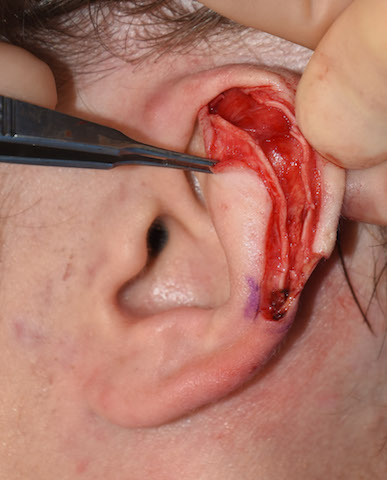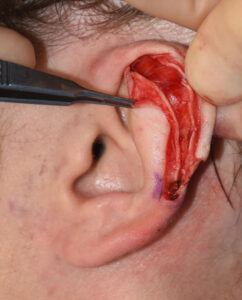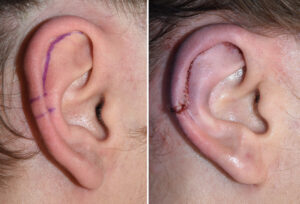Background: The ear has a complex shape due to its numerous cartilage convexities and concavities. Despite these topographic complexities the ear is best appreciated when it doesn’t stand out along the side of the head. (a normal auriculocephalic angle) But one other dimension, height, can also make the ear more noticeable than desired.
The typical height of the ear is stated to be in the low 60mm range, 63mms to be exact. The male ear is about 5% larger than a females which is also reflected in ear length. Generally an ear that has a height of 65mms or greater would be considered long and potentially unaesthetic.
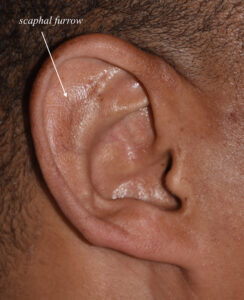
But in patients with normal ear heights (65mms or less) the helical fossa is fairly narrow with little room for excision. This indicates that a different scapha cartilage approach is needed if the height of the ear is to be shortened.
Case Study: This male desired a smaller vertical ear height. By his own admission he needed just a little to bring down the upper helical curve a bit. He had a narrow helical fossa on both ears with an ear height of 65mms.
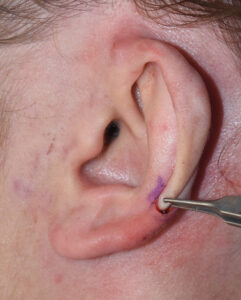
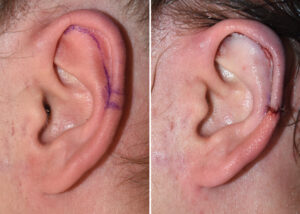
With a narrow or normal scapha furrow doing a cartilage and skin excision as in traditional vertical ear reduction may result in a cartilage or skin deficiency during closure. This will cause the helical rim to roll inward as it is advanced downward. It is better to not initially perform any excision, other than the needed mid-helical rim area, and only perform it during closure if needed.
The normal height ear can be vertically shortened a modest amount using a modified scaphal cartilage reduction technique with inferior helical rim advancement.
Case Highlights:
1) Vertical ear reduction is typically done in patients with large/long ears due to enlarged scapha and/or earlobe regions.
2) In the normal height ear vertical ear reduction can also be done but the scapha region has limited width to remove.
3) In the normal height ear it can be vertical shortened by a scapha cartilage split technique.
Dr. Barry Eppley
Indianapolis, Indiana

